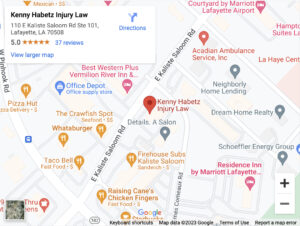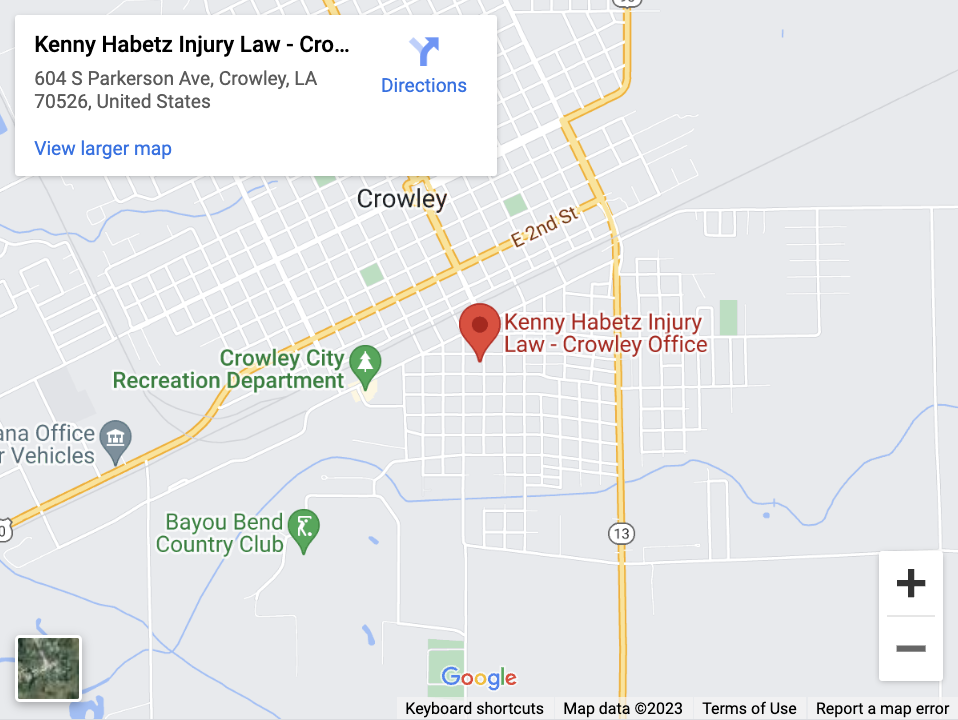
An eye injury can deprive you of what is perhaps your most heavily-relied-on sense. Research suggests that as much as 85% of the information your brain receives comes through your sense of sight, which your brain then processes and uses to do everything from reading to avoiding obstacles as you walk through a room.
Eye injuries can result from almost any kind of accident. You do not even need to experience eye trauma to suffer an injury that impairs your vision. For instance, a serious head or brain injury can leave you with double vision, blurry vision, or blindness.
How Do Your Eyes Work?

Your eyes are an extension of your brain that consist of specialized nerve endings that sense light. Those sensory signals then travel to the brain to construct a picture.
The eyes sit inside the cavities known as orbits, also called the eye sockets, which are made up of a thick brow bone along with thinner bones, all of which support the eye from the sides, below, and behind.
Muscles work to anchor and move the eyeball — also known as a globe — within the orbit. Nerves and blood vessels run to these muscles to control and feed them, while the eyeball itself processes light to produce nerve signals.
The two most noticeable parts of the eye are the pupil and iris. The pupil is an opening within the iris that allows light into the eye, while the iris itself is a muscle that contracts or relaxes to allow more or less light in. In low light, the iris dilates the pupil to allow more light to enter, while in bright light, the iris narrows the pupil to protect the sensitive nerve endings of the retina, as mentioned below.
The pupil and iris sit behind the cornea, a clear structure that sits at the front of the globe and shields it from foreign objects. It also serves as the first stage in focusing light entering the eye.
The lens sits behind the pupil. Muscles adjust the shape of the lens to focus light entering the eye. The adjustments made by the lens allow your eyes to automatically capture images of objects near and far.
Lastly, the light focused by the lens falls on the retina, a structure that includes millions of nerve endings that detect the frequency and intensity of the light. The retina sends that information via the optic nerve to the brain, where the light signals are constructed into visual images.
What Can Cause an Eye Injury?
Your eyes can be injured in several ways, including the following:
Blunt Impact
A blunt impact to your head or face can injure your eye(s) even if no open wound has been left behind by the force of the blow. These forms of eye injuries can happen in any accident involving head trauma.
For example, you could hit your face on your steering wheel or dashboard in a car accident, the impact of which could fracture bones or even rupture the globe altogether.
Penetrating Injury
An object can penetrate the face, orbital, or even the eyeball itself. In a construction accident, a substandard drill bit, for instance, could snap, being propelled into your eye. In another set of circumstances, a dog bite attack could end with the dog’s tooth piercing your eyelid.
Foreign Matter
A foreign object does not necessarily need to penetrate your eye in order to damage it. Foreign matter can scratch your eye and even end up tangled in its muscles, blood vessels, and surrounding nerves. Thus, you could injure your eye when broken glass gets thrown into it during a motorcycle accident.
What Are Some Examples of Eye Injuries?
Eye injuries take many forms depending on the structure that gets damaged, such as:
Corneal Abrasion
Debris in your eye can scratch the cornea.
Symptoms of a corneal abrasion include the following:
- Pain
- Red, watery eyes
- Blurry vision
A mild corneal abrasion may heal within a few days, but a severe abrasion could take weeks to do so. The greatest threat from a corneal abrasion is an eye infection. Your doctor may prescribe antibiotic eye drops to reduce the risk of infection.
Fractured Orbital
A powerful blow to the head can fracture the bones surrounding the globe and pose several risks to your vision.
For one, without the support provided by the orbital, the eye can move out of alignment with the other, causing double vision. A drooping eye also produces visible disfigurement.
Additionally, bone fragments produced by a fractured orbital can become tangled in your eye muscles and sever them, the nerves, or the blood vessels. Damage to these structures could leave your eye partially or totally paralyzed.
Ruptured Globe
The globe can rupture when it gets penetrated by an object or hit by a force strong enough to pressurize and burst it.
When the globe ruptures, other structures can get damaged as well. As a result, some cases will result in permanent vision loss.
For example, the bone fragments of a fractured orbital could pierce and rupture the globe, almost always leading to partial or total vision loss in the affected eye.
In many cases, doctors can repair a ruptured globe by suturing the rupture, but the repaired globe might not function. If you lose vision in the eye and the injury causes pain and disfigurement, doctors may remove the globe and replace it with a prosthetic.
Detached Retina
The retina, located at the back of your eye, can detach from the inside surface of the globe. Though it can sometimes happen due to natural degeneration, the retina can also detach as a result of trauma. In doing so, the retina loses its blood supply and can die within a few hours.
Symptoms of a detached retina are as follows:
- A shadow or “curtain” across your visual field
- Flashing lights in your vision
- Loss of peripheral vision
A detached retina will not heal on its own, and without emergency treatment, you will lose vision in the injured eye. Treatment usually involves the use of lasers or a freezing probe to create scar tissue inside the eye that will hold the retina in place.
Can I Get Compensation For My Eye Injury?
When you prove liability, you can pursue eye injury compensation for economic losses, such as medical costs, wage losses, and diminished earning capacity, that resulted from trauma caused by someone else’s intentional or negligent acts.
Since eye injuries require a specialist ophthalmologist for treatment, you could face massive medical bills. If the eye injury causes temporary or permanent vision loss, you may not be able to perform your job.
You can also pursue compensation for non-economic losses, which cover the impact of your eye injury on your quality of life. Eye injuries can cause pain, anxiety, and several disabilities.
Contact Kenny Habetz Injury Law for a free consultation to discuss your eye injury and the compensation you can pursue for it.


